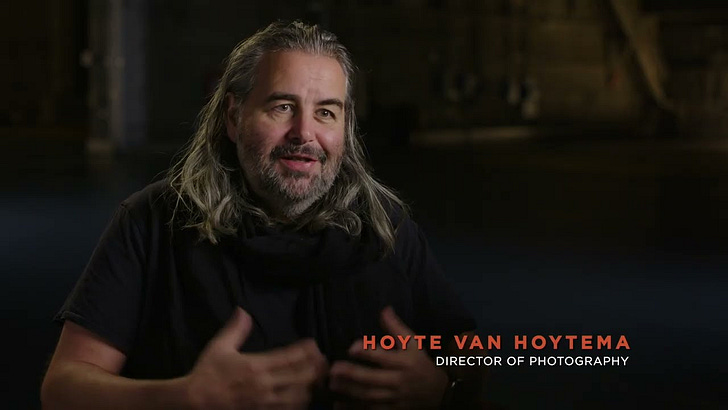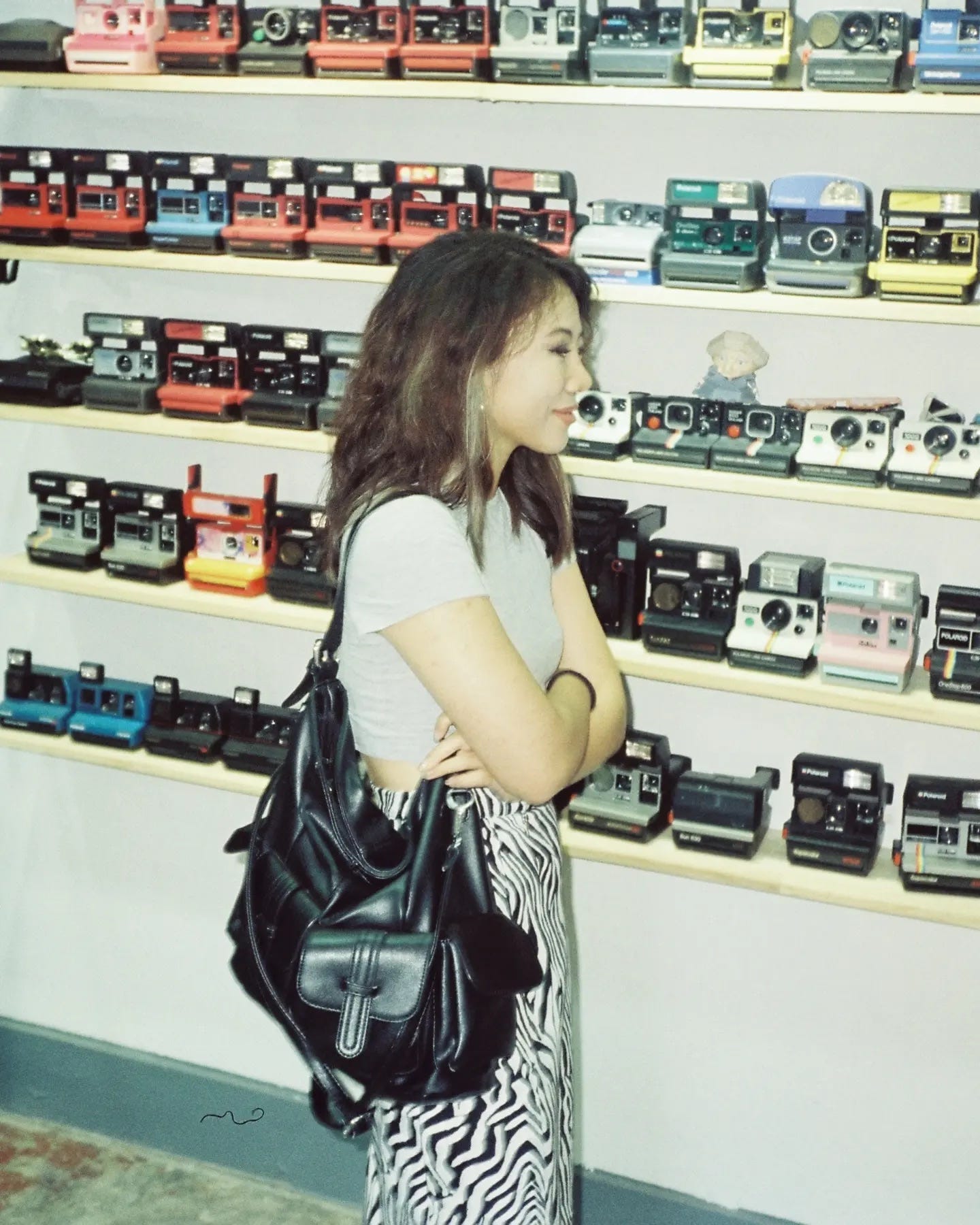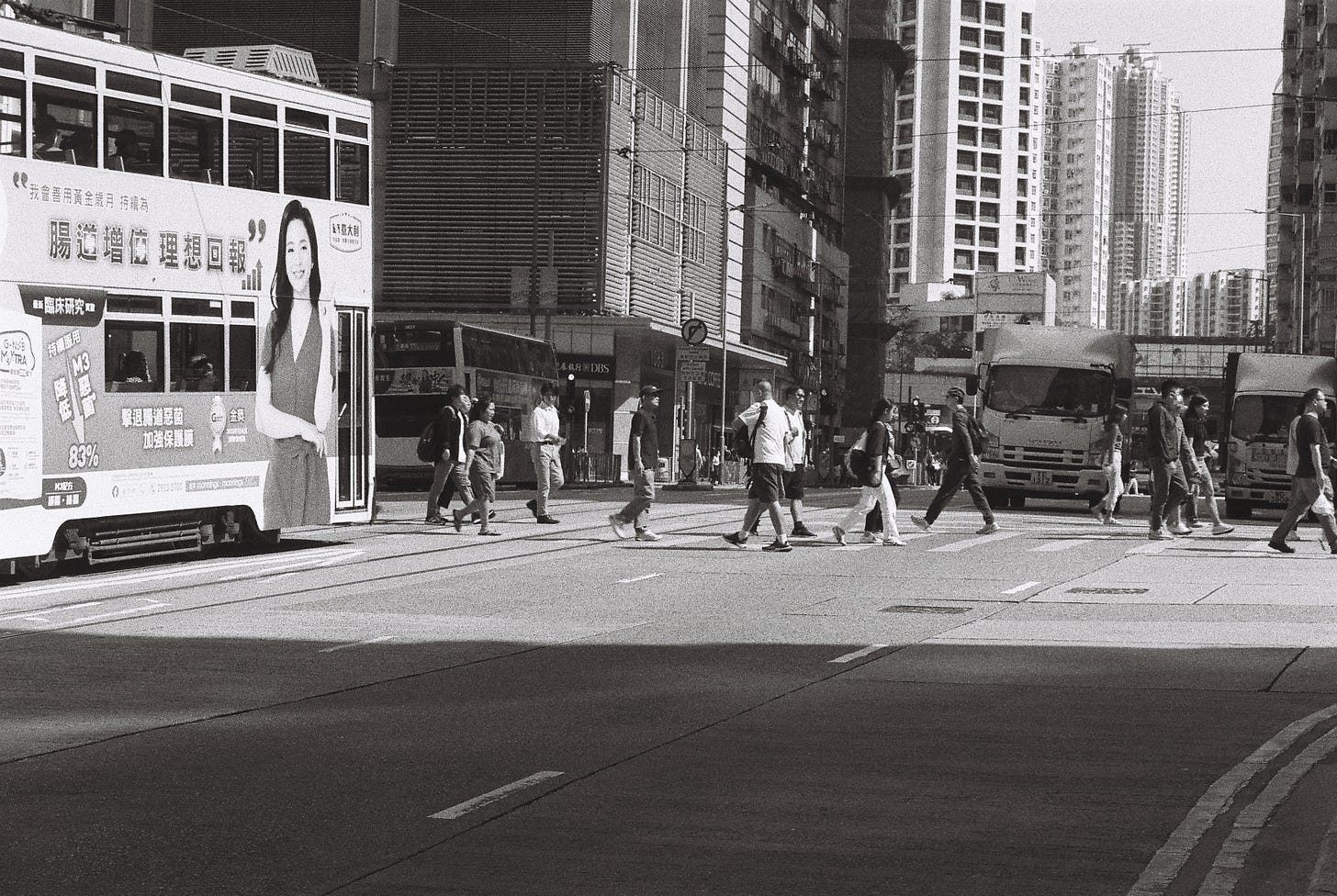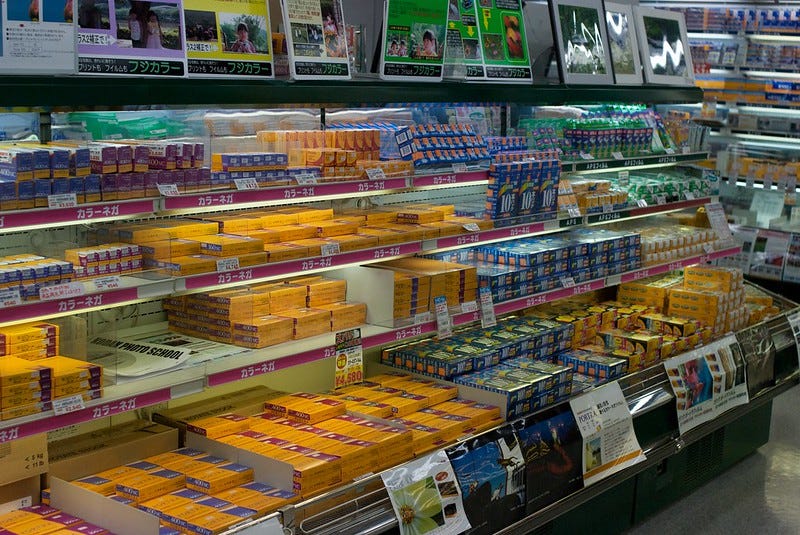In 2023, when Christopher Nolan was still shooting Oppenheimer on 11-mile-long, 600-pound rolls of IMAX film, the slogan that film is not dead became even more convincing than ever.
Video: Christopher Nolan used IMAX film technology to shoot the Oppenheimer film, and he showed his audience the great story through 65 mm high-quality IMAX film. Video by Universal Pictures UK.
Whether it was Dunkirk, Inception or Tenet, Nolan insisted on shooting with film cameras rather than the digital devices that are more convenient. The legendary director believes that his insistence on film camera can bring out the most realistic visual effects. This will bring audiences to connect with his works on a spiritual level.
The Resurgence of Film
Image: Landy Tong smiled as she stood in a vintage film camera shop in Shenyang. Photo by Liwei Zhao. Used with permission.
In the age where digital cameras continue to become lighter and mobile phones have more pixels. Used vintage film cameras have seen an unexpected resurgence. Vintage film cameras like the Nikon F3, Canon AE-1 , and Canon AE-1P are getting a renewed popularity among young people. They rummage through second hand markets or their grandmother’s basement trying to find one that still work.
As a portrait photographer, I am no exception. I am used to double-checking my photos after each shoot, then, using Photoshop to adjust the details to ensure the perfection of my work. But now, I’m absolutely hooked on film photography. I've started to stock up on film rolls and get used to carrying bulky film cameras with me whenever I travel. Just yesterday, I realized I couldn’t even find the charging cable for my digital camera anymore.
What’s brought film photography back to fashion?
Depends on the rapid spread of social media, film photography seems to have become trendy.
Image: Instagram app on smartphone. Photo by Santeri Viinamäki. Used with a CC BY-SA 4.0 license.
As a easy and accessible platform to share photos, Instagram has a huge influence on photography trends. Over 26 million Instagram posts tagged with the hashtag #fillmisnotdead. Even without a film camera, young photography enthusiasts are using Dazz’s vintage film style filters to manipulate their photos. Because photos taken with film cameras tend to have a unique aesthetic that stands out on social media. Whenever a popular photographer posts his film camera on Instagram, the demand for the camera skyrockets.
Not just a scene, but the moment in time.
“On the street of Hong Kong, I held up my camera, flicked the film advance lever, and focused intently as the pedestrians crossing the street. When I finally pressed the shutter, I knew it would be at least two weeks before I saw this scene again.”
Image: Pedestrians crossing the road at a crossroads in Hong Kong. Photo by Landy Tong.
The sense of anticipation and delayed gratification that film photography offers is something that digital cameras’ instant results simply can't replace. Film photography is not only the art of light, but also the art of time. Placing the order for film rolls online, having them deliver to your home, installing the films, shooting all 36 reels, and then waiting for the film to be developed. All this anticipation and uncertainty of the results makes the entire photographic process unique. The core of photography returns to the scene, the environment, rather than the digital pictures on the camera screen.
Image: Photographic processing transforms the latent image into a visible image, makes this permanent and renders it insensitive to light. Image by Marianna Caserta. Used with a CC BY-SA 4.0 license.
The limitations of films itself also sent photographers back to the scene where they were shot, rather than relying on Photoshop on their desks. With only 24 or 36 photos per roll, the subject of every shot will be chosen carefully. Before pressing the shutter, the light and composition are thoughtfully considered. Limited opportunities make the creative process more intentional and pure.
And what about the future?
Image: Kodak films placed on the shelves at Yodobashi Camera Store, Shinjuku. Photo by Jun Seita. Used with a CC BY-NC 2.0 license.
As demand for film grows feverishly, supply shortages threaten its revival. Over the past decade, film production has shrunk dramatically due to the rise of digital photography. Fujifilm, one of the major film producers, has struggled to meet the market demand because of a global shortage of raw materials. At one point, Fujifilm even stopped production of the Fujifilm pro 400H.
It's not just Fujifilm facing these challenges. Photographer Natalie Carrasco notes that Kodak is facing the same problem because of the rising of production costs, shipping costs and competition from digital cameras. In the age of digital photography, 35mm color film seems to have become a rare commodity resource. Film photographers have had to search high and low to get enough film rolls to continue their work.
In the short term, the shortage of film will cause the film price even higher. Nevertheless, these obstacles have not stopped the love of film photography. The careful consideration and intentionality will help photographers navigate these obstacles and keep the film alive.
Film photography is not going away, and for those who love it, there is no substitute for the pure creative experience of film shooting.









What do you think are the long-term implications for the film photography industry if supply shortages and rising costs continue?
Insightful article
love the sentence”Film photography is not going away, and for those who love it, there is no substitute for the pure creative experience of film shooting.”